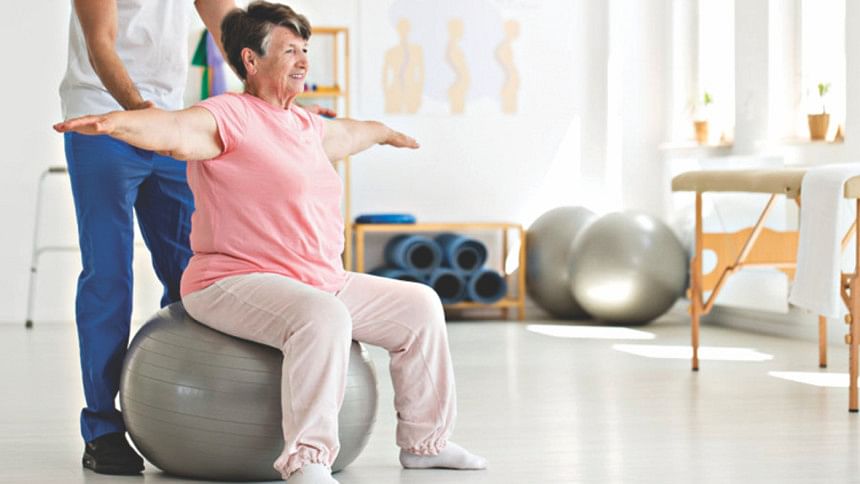Physiotherapy after breast cancer surgery

Breast cancer is becoming one of the most common conditions all over the world as well as Bangladesh. Cancer is also now declared as a major type of disability. Breast cancer is the most common type of cancer affecting women. One out of every eight women is at risk of developing breast cancer. In Bangladesh, most women present with late-stage breast cancer. If found at the early stage, 98% of women will survive past five years.
Women with breast cancer often have treatment with some kind of surgery or even multiple surgeries which can include surgical breast biopsy, lumpectomy, mastectomy, lymph node removal, and breast reconstruction surgery.
Any of these can have some side effects like pain, stiffness, lymphoedema etc. It also affects how well you can move your shoulder and arm or go about your ADLs (activities of daily living) like dressing, bathing and combing your hair. Pain and stiffness can cause weakness and limit movement of your arm and shoulder.
Many patients who undergo breast surgery rarely come to a physiotherapist as a part of their recovery plan, especially if the procedure involved arms, legs or parts of the body that move or regulate movement. But physiotherapy is compulsory management for patients who have undergone breast surgery, including surgery to treat breast cancer and or radiation two the breast. Physiotherapy after breast cancer surgery is important to manage pain, relieve stiffness in the neck, back, chest and shoulders, increase range of motion, improve fatigue and endurance, increase strength and cardiovascular fitness and correct postural mal-alignment etc. To manage the mentioned complications, the physiotherapists use physiotherapy techniques:
Chest physiotherapy: Exercise to help improve aerobic (heart-lung) capacity is important for women who have had breast cancer. There is evidence that fitness and weight loss may even help lower the risk that some types of cancer will come back after treatment. Therefore some breathing exercises such as spirometry exercise, Deep breathing exercises (chest expansion and diaphragmatic breathing) are very common to maintain normal lung function also for managing pulmonary complications.
Myofascial release: After breast cancer surgery a patient may have tenderness and muscle spasm over and surrounding the area of surgery including chest wall, shoulder and arm. Myofascial release and soft tissue mobilisation may help to reduce these muscle spasms thus reduce pain and tenderness.
Lymphatic drainage massage: A special physiotherapy technique that is designed to help reduce your risk of lymphoedema, or swelling in the arm, on the side where you had surgery. These exercises are mainly designed to help regain the range of motion of the arm and shoulder. Ask your physiotherapist about your lymphoedema risk and if you should use exercises to help reduce that risk.
Stretching and strengthening exercise: Physiotherapists can treat muscle imbalance that occurs after breast surgery. Physiotherapists stretch the short muscle and strengthen weak ones. These are not started until 4 to 6 weeks after surgery and must be personalised to your general health, medical condition, and fitness. It is probably best to start a strengthening programme in a supervised setting with a physiotherapist who is specially trained in post-cancer physiotherapy to be sure you are doing the exercises properly.
The writer is a physiotherapist.
Email: [email protected]

 For all latest news, follow The Daily Star's Google News channel.
For all latest news, follow The Daily Star's Google News channel. 



Comments